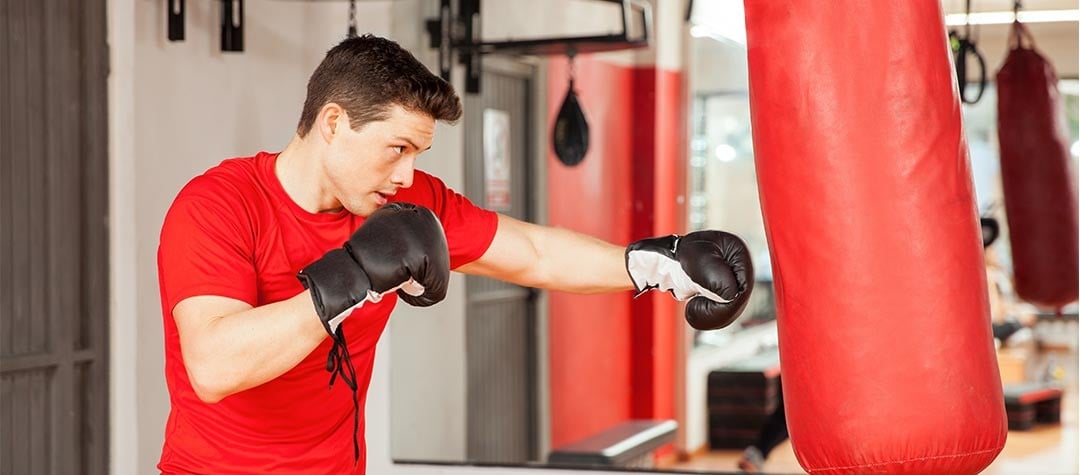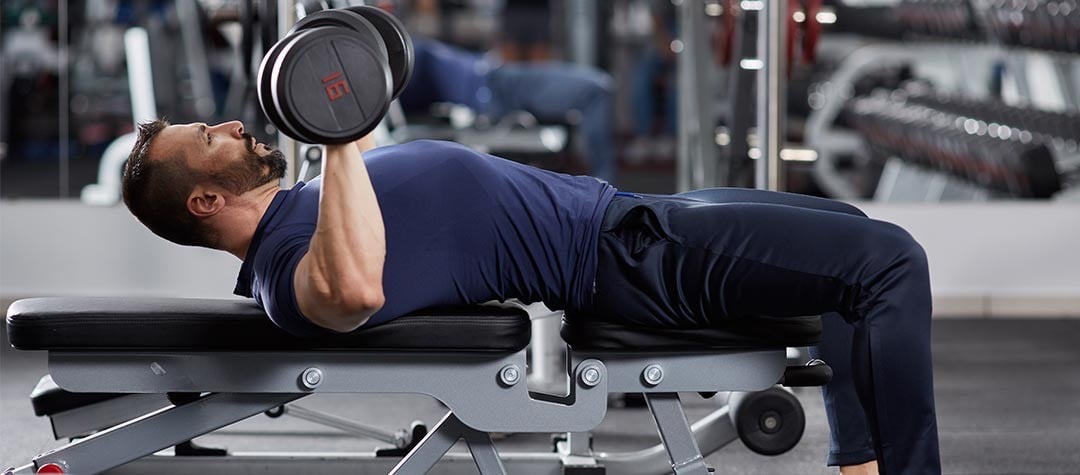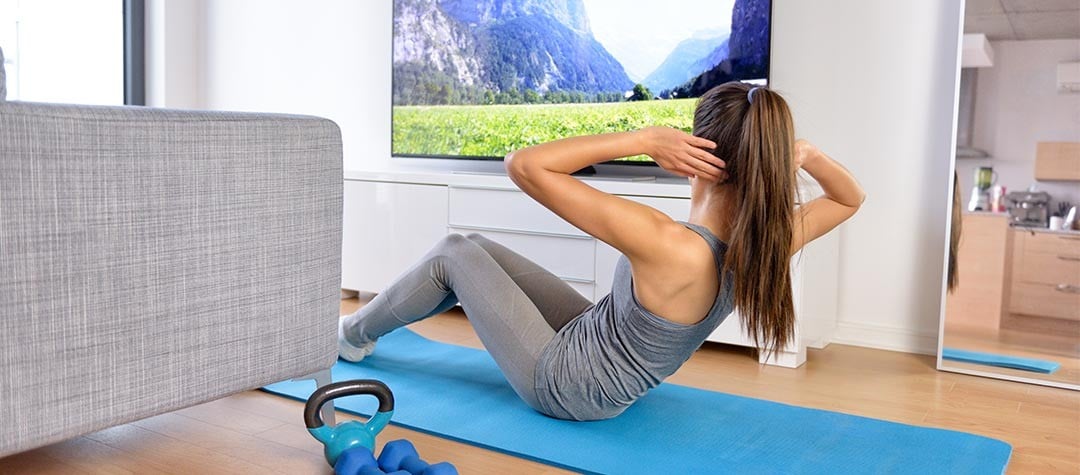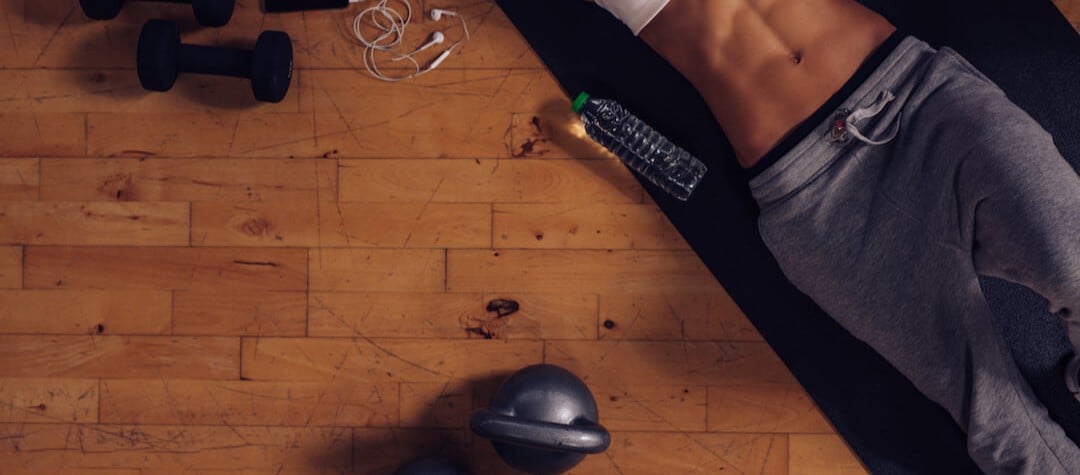A ‘six-pack’ of abdominal muscles is possible with a combination of correct training and a strictly controlled diet. Use this guide to help you achieve a six-pack.
Try this program, involving sessions which take just six minutes, which includes:
- Correct muscles to train your abs
- Nutrition tips to gain a six-pack
- Six-pack exercises
- How to train your abs
- Abdominal training equipment
Which muscles make up a six-pack?
The traditional six-pack refers to the muscle groups across the front of the abdomen, namely the rectus abdominis. However, the obliques and transverse abdominis are also part of your abdominal muscles and specific core muscles including the multifidus should not be ignored in your training program.
Be realistic with your six-pack ambitions
We’ve all seen pictures on magazine covers of people with enviably ripped stomach muscles. However, it is important to realize that these pictures rarely tell the complete story. The body-building models featured are usually photographed, when they have spent weeks dieting-down to achieve such a defined look. However, trying to achieve an extremely low level of body fat is neither healthy nor sustainable.
The models will revert to a normal diet and whilst their ab strength remains the same, their abs become less visible due to a light and healthy covering of body fat. Just because you can’t see your abs doesn’t mean that they’re not there! Body fat is necessary for good health, and simply focusing on lowering your body fat should not be your goal. Instead, focus on healthy nutrition and correct exercises to tone up your abs and the results will follow.
Six-pack training exercises
When training your abdominal muscles, it is important to integrate them into an all-over body program so that you remain in complete musculo-skeletal balance. If you simply focus on exercises to build a six-pack and nothing else, you unbalance the body which can lead to injury. For example, it is important to balance-out stomach exercises with lower back exercises. There are numerous exercises for the abdominals but if you focus on just a few, they can easily be integrated into your usual sessions without taking up too much extra time.
| Exercise (read on for exercise descriptions) | Muscle group | Area of body |
| Standard sit-up | Upper abdominals | Front of abdomen (upper) |
| Oblique crunch | Obliques | Sides of abdomen |
| Supported v-sit | Lower abdominals | Front of abdomen (lower) |
| The plank | Core | Deep postural muscles |
| Side plank | Core | Deep postural muscles |
| Back extension | Errector spinae | Lower back (to maintain body in balance) |
The six-minute six-pack workout
With this simple program, by targeting the correct muscles and exercising correctly, rapid results can be obtained. Start by building up to completing each session once a week, with an interval of two days between the different sessions. Each session should take approximately six minutes. As your fitness improves, build further to completing the entire sequence of exercises twice a week.
Session 1
Target = two sets of 20 repetitions of each exercise.
Standard sit-up Lie on your back, on the floor, feet flat, knees bent and shoulder width apart. Position your fingertips just forward of your ears. Keeping the head and neck in line with the spine, lift the shoulders up from the floor, contracting the abdominals. Lower the body to the floor under control and repeat. Avoid hooking the feet under a stationary object, which will work the hip flexors rather than the abdominals.
Supported v-sit Lie on your back, on the floor, knees tucked into the chest, feet and legs together. Slowly extend legs until they are straight out in front of you, keeping your feet off the floor. Return to tuck position and repeat.
Back extension Lie face down on the floor, arms parallel with your sides, head and neck in line with the spine. Lift the shoulders from the floor by contracting the erector spinae (lower back muscles) and keeping the head and neck in line with the spine. Lower the shoulders to the floor under control and repeat.
Session 2:
Target = one set of 20 repetitions for oblique crunches (per side) and 60 seconds duration for both the plank and side plank.
Oblique crunch Sit on a stability ball and twist your body around so that one hip is positioned on top of the ball. Brace your feet against the bottom of a wall. Slowly lower your body towards the ball until you feel a stretch from the armpit to the hip on the upper side. Contract your obliques and lift your body up to a vertical position to complete one movement. Always return to a fully stretched position each time.
The plank Lie face down on the floor, positioning your elbows directly underneath your shoulders. Tuck the arms into the sides, flat on the floor and pointing ahead. Bringing the legs and toes together; lift your body up from the floor, balancing upon toes and forearms. Fully contract core muscles in towards the spine. Maintain relaxed breathing throughout.
Side plank Lie on your side on the floor in a straight line. Position one leg on top of the other and prop up your body on one elbow, keeping the elbow well tucked in. Lift the pelvis up from the floor as high as possible and hold the position, fully contracting the core muscles. Maintain relaxed breathing throughout.
Abdominal training equipment
Most gyms use and many sports retailers sell, ‘ab trainers’. This is tubular framed piece of equipment is designed to specifically help you with abdominal training. They are unnecessary. If the abdominal exercises above are carried out correctly, compared with ab trainers, you will:
- exercise far more effectively
- achieve faster results
- achieve greater results
- save money
- save training time
Consistency with your training is the key and if you follow the six-minute six-pack program, you will see and feel the difference in your whole body. Stronger abs are just six minutes away.















